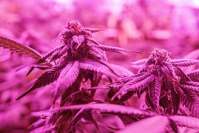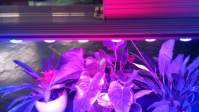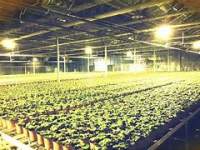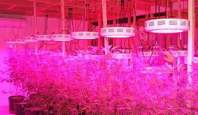Why is LED plant light the high-tech in LED?
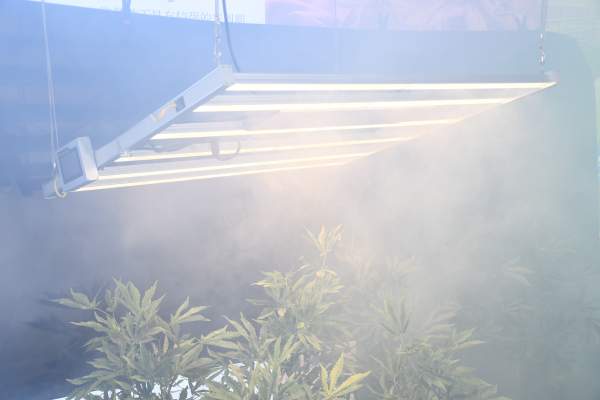
The indicators of LED plant lights can be said to be the most replicated in the LED industry. Various plants survive in unique geographical environments, including sunlight, temperature, altitude and soil quality. They have formed a unique flowering and reproduction response strategy in the evolution of natural environment life over hundreds of millions of years, that is, limiting the flowering season to one A suitable period to ensure that the offspring can grow and develop smoothly. This is the photoperiod phenomenon of plants. In the process of natural selection and evolution, most plants will gradually adapt to the rhythm of the natural light environment, forming an obvious seasonal optimal reproduction. Photoperiod is an important environmental factor that induces flowering of plants. The regularity of plant breeding performance is summarized and analyzed in order to improve the output efficiency of facility agriculture and promote the healthy development of agricultural planting industry.
LED plant lighting involves multiple disciplines, including semiconductors, spectroscopy, biology, etc. There are certain technical thresholds, and the cost is there. The LED plant lamp lighting factory is still in the recognition and running-in period in the Chinese market. When the LED plant lamp lighting market opens, then it will be cheaper.
The purchase quantity of LED chips for lighting is N times that of plant lights, and the price is cheaper. If the number of plant lights is large enough, the price of lamp beads will be similar to that of lighting. The plant light with the ratio of red and blue can only ensure that the plant can live when the wavelength is used correctly and the power is sufficient, but it cannot guarantee that the plant can live well.
1. Whether LED plant lights are more expensive than ordinary LEDs, I think this is mainly based on the wavelengths required by plant LEDs (some wavelengths are difficult to achieve and costly). I don’t understand biological knowledge, so I can’t Reasonable answer. If the core technology of the specific wavelength required by plants is in the hands of relatively few people, this will also have a great impact on the pricing of plant LEDs.
2. Regarding the cost of LED lights. The main cost of LED lights comes from several aspects, such as chips, brackets, gold wires, phosphors (some are more expensive), power supplies, and so on. The lamps of conscientious manufacturers are better in all aspects, but unscrupulous manufacturers are unscrupulous.
3. Regarding red (or other color issues), there should be a relatively large error in observing the color with the naked eye, such as 650nm light and 640nm light, which may not be observed by the human eye (see the following picture, just look at the wavelength and color). However, the actual LED lamps that produce light in a specific wavelength band have different light color costs. Since there is no specific light color data required by plants, it is not clear here.
Photoperiod is an important factor inducing flowering in plants. Based on the analysis of the physiological pathways of plant flowering photoperiod, this article outlines the specific application of photoperiod in plant flowering, and points out that other environmental factors should be considered in the application, which provides useful ideas for the efficient development of facility agriculture flower planting industry. It also provides a scientific basis for LED manufacturers to produce plant growth lights and control design.
Types of plant photoperiod response
The transformation of plants from pure vegetative growth to dual growth of nutrition and reproduction is a major turning point in plant life, and its importance is the continuation of the plant species itself. American Garner (W.W. Garner) and Allard (H.A. Allard) proposed in 1920 the concept that "plants can measure the length of sunlight and perceive the seasons based on this", which is now called the photoperiod phenomenon.
In a certain period of development, according to the type of response to the length of daylight, plants can be divided into long-day plants (long-dayplant, abbreviated as LDP), short-dayplants (short-dayplant, abbreviated as SDP), and day-neutral plants. Plant (day-neutralplant, abbreviated as DNP). LDP refers to plants that have to have more than a certain number of hours of light per day and a certain number of days to bloom. Such as winter wheat, barley, rape, hyssopus, sweet-scented osmanthus and sugar beet, etc., and the longer the light, the earlier the flowering. SDP refers to plants that have to have less than a certain number of hours of light per day to bloom. If you shorten the light appropriately, you can bloom earlier, but if you extend the light, you will delay or fail to bloom. Such as rice, cotton, soybean, tobacco, begonia, chrysanthemum, morning glory and cocklebur, etc. DNP refers to plants that can bloom under any sunlight conditions, such as tomatoes, cucumbers, roses, and clivia.
Plant flowering photoperiod physiological pathway
Plant leaves receive the photoperiod signal, which is to conduct the flowering stimulant to the growth point of the stem tip. Phytochromes and cryptochromes participate in this pathway as photoreceptors. Through gene expression, flower organs are formed to control flowering. Higher plants have at least three types of photoreceptors: phytochromes that sense red light and far-red light, cryptochromes and chemokines that absorb ultraviolet (UV-A) and blue light.
Key issues in the application of plant flowering photoperiod regulation
1 Flower induction of red light and far red light
photosensitizers mainly receive red light (Pr) and far-red light (Pfr) signals, which influence the induction of plant flower formation. Flower formation is not determined by the absolute amount of pr and pfr, but by the ratio of Pfr/Pr. SDP forms flowers at low Pfr/Pr ratios, while LDP flower formation stimulating substances require relatively high Pfr/Pr ratios. If the dark period of growth is interrupted by red light, the ratio of Pfr/Pr will increase, which will inhibit SDP flower formation. The requirement of ldp for pfr/pr ratio is not as strict as that of SDP, but long enough light time, relatively high irradiance and far-red light are essential for inducing the flowering of LDP.
2 The key to plant flowering and the artificial control of photoperiod
SDP flowering is determined by the length of the dark period, not the length of the light. The length of sunlight required for ldp to bloom is not necessarily longer than the length of sunlight required for sdp to bloom.
learned the key to plant flowering and the type of photoperiod response, which can extend or shorten the length of sunlight in the greenhouse, control the flowering period of plants, and solve the problem of flowering. Artificially extending the light can accelerate the flowering of long-day plants, and appropriately shorten the light, which can promote the flowering of short-day plants earlier. If you plan to delay flowering or not flowering, you can set the operation in reverse. If plants with long-day sunlight are cultivated in the tropics, they will not bloom due to insufficient light. Similarly, short-day plants cultivated in temperate and frigid zones will not bloom due to excessive sunlight.
3 Plant critical day length
Plant critical day length refers to the longest sunshine that can be tolerated to induce flowering in short-day plants or the shortest sunshine necessary to induce flowering in long-day plants. For LDP, the day length is greater than the critical day length, and it can bloom even in 24 hours. But for SDP, the day length must be less than the critical day length to bloom, but it is too short to bloom.
4 Introduction and breeding work
The artificial control of plant photoperiod is of great significance to the introduction and breeding of plants. For sdp, the seeds from the north are introduced to the south, and they need to bloom early and require late-maturing varieties. Similarly, when planting from the south to the north, early-maturing varieties are required; for LDP, the introduction of northern seeds into the south requires early-maturing varieties to delay flowering. Similarly, planting from the south to the north requires late-maturing varieties. For example, if the roselle of the genus Malvaceae is sdp, if the species moves from the south to the north, the vegetative growth period is extended. The budding, flowering, and seed setting periods are delayed, and they are easily damaged by early frost. At this time, you should know that you need shade treatment.
Problem discussion
1 photoperiod induction
When the plant reaches a certain physiological age, after enough days to be suitable for photoperiod processing, in the future, even under unsuitable photoperiod, it can still maintain this stimulating growth effect and flower.
Vernalization and temperature environmental factors
2 The relationship between geographical environment and photoperiod
Most of the short-day plants are produced in tropical and subtropical areas with short sunshine hours, and most of the long-day plants are native to temperate and frigid zones. my country is located in the northern hemisphere, and most areas belong to mid-latitudes. In the mid-latitude regions, there are long-day sunlight conditions in spring and short-day sunlight conditions in autumn, so LDP and SDP are distributed, and the length of sunlight varies seasonally in different latitudes.The process of
3The process of low temperature inducing flowering in plants is called vernalization.
Vernalization, like photoperiod, plays an important role in flower induction. After seed germination or plant growth low temperature treatment, the content of gibberellin in the body will increase. This is a comprehensive consideration when using photoperiod processing to form flowers.
In the photoperiod phenomenon, in addition to the dominant factor, day length, other environmental factors such as temperature also affect the induction of plant flower formation. Lowering the night temperature can induce LDP to form flowers in a shorter day, and at the same time make SDP to flower in a longer day. For example, sugar beet usually blooms under long-day sunlight, but at a lower night temperature of 10~18℃, it can also bloom under 8h sunlight. Morning glory is short-day at 21~23℃, but it is short-lived at 13℃. The performance is long-term.
LED lamps and control system function
Light cycle control is the light and dark state within the range of a day, which can be manually set and changed automatically. The LED control technology has evolved from the initial single constant current control to the current thyristor dimming, PWM dimming, DMX512, DALI, ZigBee and other protocol dimming. The control mode has also been developed from the earliest wire control technology to short-distance wireless control of ir, fr, and wifi. The controller adopts an embedded structure, which can monitor the light parameters in real time, communicate the data with a remote server through the Internet, and the system can easily realize the control of light and dark time.
summary
In fact, even for a certain discipline, there are different subdivisions. Their needs for light will be different. The photoperiod control has the characteristics of environmental safety, low cost of LED lamps and labor saving, and it is simple and easy to implement under the conditions of agricultural facilities. Reasonable and effective use of photoperiod can break the seasonal limitation of factory-grown plants within a certain limit, and achieve anti-seasonal stimulation or suppression, in order to achieve the goal of high-efficiency production of agricultural products. With the continuous development of science and technology, the understanding of photoperiod phenomena will inevitably become more profound. Applying the flowering and breeding of photoperiod-regulated plants to the factory planting industry will promote the steady and rapid development of facility agriculture and the LED plant lighting application industry.


